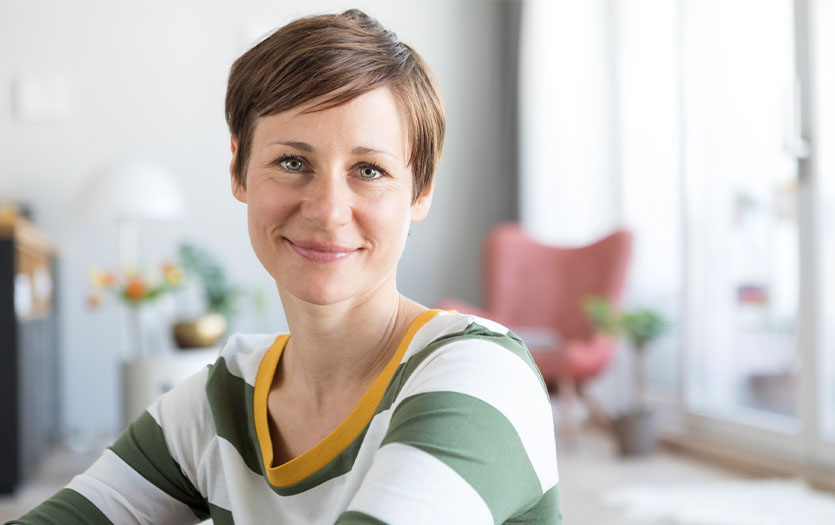
According to the American College of Obstetricians and Gynecologists, endometriosis occurs in about 1 in 10 women of reproductive age. It’s important to have a general understanding of what the condition is and the range of symptoms a woman might experience if she has endometriosis.
What is endometriosis?
Endometriosis occurs when cells that are like the cells that line the inside of your uterus grow outside of your uterus. These cells form growths that often attach to the ovaries or other organs, and they may bleed during your period and cause pain. They may also make it hard for you to get pregnant.
What are the symptoms of endometriosis?
Sometimes endometriosis does not cause symptoms. But when symptoms are present, they can range from mild to severe. Symptoms may include:
- Pain, such as …
- Pelvic pain
- Severe menstrual cramps
- Low backache
- Pain during sexual intercourse
- Rectal pain
- Pain during bowel movements
- Trouble getting pregnant (infertility)
- Abnormal bleeding, including …
- Heavy periods or bleeding between periods
- Vaginal bleeding after sex
- Blood in the urine or stool
Symptoms are often most severe just before and during your menstrual period. They may get better as your period is ending. But sometimes pain occurs all the time.
What causes endometriosis?
Experts don't know what causes endometriosis. But they do know that the hormone estrogen makes the problem worse.
Here are some possible causes.
- Your immune system may not get rid of endometrial cells outside of the uterus like it should.
- Abnormal structure of the uterus, cervix, or vagina may cause too many endometrial cells to go up through the fallopian tubes and then into the belly. (This is called retrograde menstruation).
- Blood or lymph fluid may carry endometrial cells to other parts of the body. Or the cells may be moved during a surgery, such as a cesarean delivery (C-section).
- Cells in the belly and pelvis may change into endometrial cells.
- Endometrial cells may have formed outside your uterus before you were born.
- Genetics. Endometriosis can run in families.
What increases your risk of having endometriosis?
Your risk of endometriosis is higher if:
- You are between puberty and menopause (around age 50).
- You have a family history of endometriosis.
- Your menstrual cycles are less than 28 days.
- Your menstrual flow is longer than 7 days.
- You started menstruation before age 12.
- You have never been pregnant.
- Your uterus, cervix or vagina has an abnormal shape that blocks or slows menstrual flow.
How is endometriosis diagnosed?
To find out if you have endometriosis, your doctor will ask questions about your symptoms, periods past health and family history. (It sometimes runs in families.) You may also have a pelvic exam. And you may have imaging tests, such as a pelvic ultrasound or MRI, to look at the organs in your belly.
Your exam, symptoms, and risk factors may strongly suggest that you have endometriosis. But the only way to be sure that you have it is to have surgery. Laparoscopy is often the surgery used. During this surgery, the doctor puts a thin, lighted tube through a small cut in your belly. This lets the doctor see what's inside your belly.
Managing endometriosis pain at home
Home treatment may ease the pain of endometriosis. You can try the following things along with your other treatments.
- Apply heat to your lower belly. Use a heating pad or hot water bottle or take a warm bath. Heat improves blood flow and may relieve pelvic pain.
- Relieve back pressure. Lie on your back and place a pillow under your knees. Or lie on your side and bring your knees up to your chest.
- Use relaxation techniques (like this) and biofeedback.
- Exercise regularly. Exercise improves blood flow, increases pain-relieving endorphins naturally made by your body, and reduces pain.
How is endometriosis treated?
Treatment choices depend on whether you want to control pain or you want to get pregnant. For pain and bleeding, you can try medicines or have surgery to remove the endometrial tissue and scar tissue. If you want to get pregnant, you may need surgery to remove the endometrial tissue.
PPG – OB/GYN offers providers throughout our community that can help you if you are suffering from symptoms of endometriosis. Click here to learn more about our providers and find someone near you.
Copyrighted material adapted with permission from Healthwise, Incorporated. This information does not replace the advice of a doctor.



